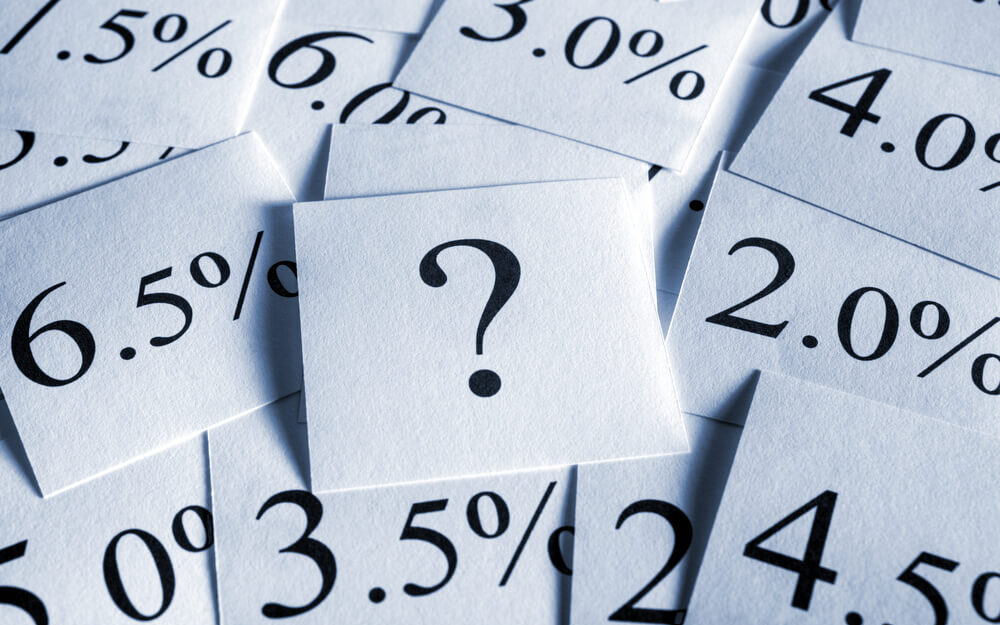We’re all led to believe that the Federal Reserve sets interest rates. However, that’s only partly true.
The Fed sets what’s called the federal funds rate in a very specialized market.
This is the interest rate that banks use to lend reserve balances to other banks overnight.
Reserve balances are amounts held at the Fed. The central bank sets minimum capital requirements for banks, which ensures potential borrowers have enough cash to meet depositor demand.
During the COVID-19 pandemic, the Fed set reserve requirements to zero. Prior to that, they were 3% to 10% of deposits based on the bank’s size.
Even though reserves are zero right now, banks are still required to maintain enough cash to meet demand for a 30-day period. Fed funds help banks meet this requirement.
At first glance, this specific rate may not seem important to us as consumers. But keep in mind that other rates are often tied to it. Banks use it as a benchmark for determining how much they charge on various loans.
That doesn’t mean consumer loans will precisely track fed funds. Banks can add a premium to loans when risks are high or set rates lower when they believe that’s warranted.
So in reality, fed funds may be the least important rate for consumers even though it attracts the most attention. Less followed but of significant importance is the rate on 10-year Treasury notes.
And this one boils down to traders in the bond market.
The Bond Market Will Be in Charge
James Carville, a political strategist for former President Bill Clinton, learned how important the bond market is when his boss entered the White House.
Carville stated: “I used to think if there was reincarnation, I wanted to come back as the president or the pope or a .400 baseball hitter. But now I want to come back as the bond market. You can intimidate everybody.”
His comment reflects the reality that bond markets, by setting interest rates, can influence national economies and government policies.
Right now, the 10-year is delivering good news for policymakers and consumers. Rates are at about 4%. That’s a big drop from October’s 5% yields.
Rates should continue to fall in 2024 as inflation cools.
Ever since it started raising the benchmark rate, the Fed has made it clear that it’s serious about fighting inflation.
And the central bank is still taking that fight seriously. New York Fed President John Williams confirmed that in an interview with CNBC last week. When asked about potential rate cuts, he answered: “We aren’t really talking about rate cuts right now. I just think it’s just premature to be even thinking about that.”
This means short-term rates are unlikely to change in the first few months of the year. However, Fed official projections show a high likelihood of three rate cuts by the end of 2024.
So we should expect several cuts, most likely in the second half of next year.
Longer-term rates could continue lower. One reason for that is inflation as well.
Inflation Expectations & Interest Rates
After living with high inflation for more than a year, consumers now expect it to remain low. That’s important because inflation expectations are a major factor in determining where to set interest rates.
Right now, we have low inflation expectations when seasonal factors favor lower rates.
But there’s another market-moving event that affects those expectations… It’s an election year.
The Fed’s credibility is tied to its independence. If Fed Chair Jerome Powell and his team take actions that investors believe are designed to influence an election, the Fed will lose credibility. If that happens, inflation expectations will rise.
We know the Fed works hard to maintain its credibility. So it’s likely that Powell and his crew will make only minimal changes to its benchmark rate before the election.
What does that mean for us as investors in 2024?
Carville’s dreaded bond market will be in charge.
The recent drop in rates shows that the bond market is optimistic about the future. That’s likely to continue, at least until we know who wins next year’s race for the White House.
Until next time,

Mike Carr
Chief Market Technician





